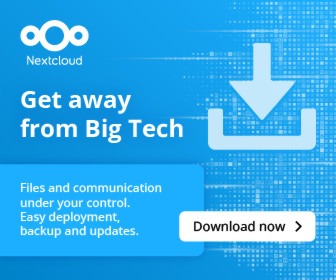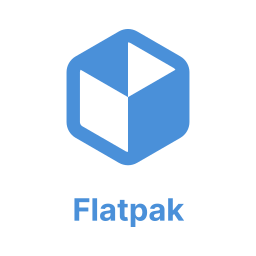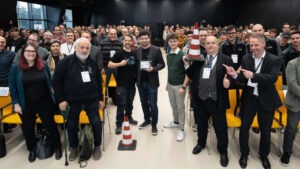The New York Stock Exchange doesn’t like it when your stock dips below a dollar.

It looks as if the Fed’s attempt to wrangle inflation under control by raising interest rates, which has made the folks on Wall Street a little less bullish these days, is causing some trouble for the open-source database company MariaDB Plc, the main driver behind development of MariaDB and related software.
The company was started in part by Michael “Monty” Widenius, the same guy who started MySQL back in the days of old. In 2008, Monty sold MySQL to Sun Microsystems, and the next year the database ended up in the hands of Big (bad) Red, otherwise known as Oracle, when it bought Sun. Widenius almost immediately forked MySQL after Oracle took control, and named the fork after his younger daughter, Maria.
In 2010, Widenius got together with Patrik Backman, Ralf Wahlsten, Kaj Arnö, Max Mether, Ulf Sandberg, and Mick Carney to start MariaDB Corporation Ab. This past December, as an intended result of a SPAC deal MariaDB went public, which gave it a listing (“MRDB.” which I like to read as “Mr. Database”) on the New York Stock Exchange.
If you don’t know what a SPAC deal is, not to worry. I didn’t either until I sent an email and asked my friend Dana Blankenhorn, who’s also a veteran tech and finance journalist at InvestorPlace.
“A Special Purpose Acquisition Company (SPAC) is formed specifically to buy a private company for it’s stock, taking it public,” he said. “They add some Private Investment in Public Equity (PIPE) money from the broker and his buddies, thus putting cash on the new outfit’s balance sheet.”
In other words, MariaDB bought, or in this case merged, with a public company, Angel Pond Holdings, to become MariaDB Plc, an Irish public limited company with dual headquarters in Redwood City, California and Dublin, Ireland. Angel Pond, it turns out, was founded by former Goldman Sachs partner Theodore T. Wang and Shihuang “Simon” Xie, who co-founded Alibaba. Wang took a seat on MariaDB’s board of directors as part of the deal.
Long story short: when MariaDB went public in December its stock was trading at $11.26, but by mid-May the price had dropped to below a dollar. This led to a warning from the New York Stock Exchange, which likes to count stock prices in dollars rather than pennies, to get the price back above a dollar … or else.
“Fall below $1 for too long and you get delisted by the exchange,” Blankenhorn said. “The solution is usually a ‘reverse stock split.'”
“Too long” turns out to be six months after receiving the notification from the exchange, so the company still has some breathing room. In case you’re wondering what a “reverse stock split” is, so was I.
“Turn, say, 20 MariaDB shares into one with a reverse split and a 12 cent stock is worth $2.40,” Blankenhorn explained. “If things don’t turn around you still go bankrupt.”
Blankenhorn’s negativity aside, MariaDB released a press release on June 30 with a more positive spin. Basically, they said, “We got it covered”:
The company intends to notify the NYSE of its intent to regain compliance with the applicable NYSE continued listing standards. The company can regain compliance at any time within a six-month cure period following its receipt of the NYSE notice if, on the last trading day of any calendar month during the cure period, MariaDB’s ordinary shares have a closing share price of at least $1.00 and an average closing share price of at least $1.00 over the 30 trading-day period ending on the last trading day of the applicable calendar month.
MariaDB’s ordinary shares will continue to be listed and will continue to trade on the NYSE during the cure period, subject to the company’s compliance with other NYSE continued listing standards.
That’s the long way of saying, we’ll get the stock price back up in time, not to worry.
Evidently the company has been working to rectify the situation for a while. In April it made some job cuts (ouch!) and by March it was looking for capital to meet its projected across-the-board needs for the period beginning October 1. In May, the company notified investors that it was “in advanced discussions with a large commercial bank about a loan facility that includes both a term loan and a revolving credit facility,” but nothing is known about the results of those talks.
The price of the stock might start to bounce back on its own, as the company has recently introduced some innovative products. In May, for example, it announced a PostgreSQL-compatible front end for its SkySQL Database-as-a-Service, which provides a globally distributed relational database management system through its back end. Another plus is that MariaDB also offers the functionality to serve as a backend for MongoDB clients.
MariaDB created a bit of brouhaha within the open-source community a couple of years back when it announced that at least one of its products would be using an “open,” but not open-source, license called the Business Source License. The majority of MariaDB’s products, however, remain licensed under the GPL.
Christine Hall has been a journalist since 1971. In 2001, she began writing a weekly consumer computer column and started covering Linux and FOSS in 2002 after making the switch to GNU/Linux. Follow her on Twitter: @BrideOfLinux









Really good wrtiting, well explained all the way. I will be looking into more articles written by you.
I nice fresh intake from all others “same same” articles.
Thank you, Ola. I appreciate that!